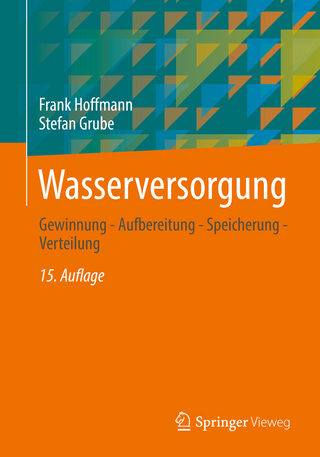
Environmental Technology in the Oil Industry
Seiten
2010
|
Softcover reprint of hardcover 2nd ed. 2008
Springer (Verlag)
978-90-481-7376-1 (ISBN)
Springer (Verlag)
978-90-481-7376-1 (ISBN)
Zu diesem Artikel existiert eine Nachauflage
Further safety devices, such as flares, are used to burn excess hydrocarbons in the industry, but can allow a small proportion of hydrocarbon into the atmosphere without being burnt. Combining methane and non-methane hydrocarbon totals provides a better idea of where most of the hydrocarbon emissions come from within the ind- try sectors.
FIGURE 1.1. BP group annual total air emissions by pollutant 1999–2004 (See Color Plates). FIGURE 1.2. BP group annual total air emissions* by business 1999–2004 (See Color Plates). evaporate. In addition, gas can be released from operations through contr- led process vents for safety protection. Further safety devices, such as flares, are used to burn excess hydrocarbons in the industry, but can allow a small proportion of hydrocarbon into the atmosphere without being burnt. Ind- try contains and controls these emissions wherever possible to minimize any loss of hydrocarbon. Hydrocarbon vapours, often described as volatile organic compounds or VOCs, are potentially harmful air pollutants, which can result in local health impacts as well as local or regional contributions to the formation of low-level ozone; which in turn, may also impact human health. Controlling hydrocarbon loss helps prevent impact on air quality and is also economically beneficial. 4 A. Ahnell and H. O’Leary In 2004, BP emitted 245 kilo-tonnes of non-methane hydrocarbons to air, a decrease of 24 kilo-tonnes (9%) compared with 2003. The largest prop- tion of these emissions came from the exploration and production businesses (44%), followed by refining and marketing (R&M) (35%). Combining methane and non-methane hydrocarbon totals provides a better idea of where most of the hydrocarbon emissions come from within the ind- try sectors. In BP’s case, the exploration and production activities account for 67% of the total volume of such hydrocarbons emitted to air in 2004.
FIGURE 1.1. BP group annual total air emissions by pollutant 1999–2004 (See Color Plates). FIGURE 1.2. BP group annual total air emissions* by business 1999–2004 (See Color Plates). evaporate. In addition, gas can be released from operations through contr- led process vents for safety protection. Further safety devices, such as flares, are used to burn excess hydrocarbons in the industry, but can allow a small proportion of hydrocarbon into the atmosphere without being burnt. Ind- try contains and controls these emissions wherever possible to minimize any loss of hydrocarbon. Hydrocarbon vapours, often described as volatile organic compounds or VOCs, are potentially harmful air pollutants, which can result in local health impacts as well as local or regional contributions to the formation of low-level ozone; which in turn, may also impact human health. Controlling hydrocarbon loss helps prevent impact on air quality and is also economically beneficial. 4 A. Ahnell and H. O’Leary In 2004, BP emitted 245 kilo-tonnes of non-methane hydrocarbons to air, a decrease of 24 kilo-tonnes (9%) compared with 2003. The largest prop- tion of these emissions came from the exploration and production businesses (44%), followed by refining and marketing (R&M) (35%). Combining methane and non-methane hydrocarbon totals provides a better idea of where most of the hydrocarbon emissions come from within the ind- try sectors. In BP’s case, the exploration and production activities account for 67% of the total volume of such hydrocarbons emitted to air in 2004.
General Introduction.- Environmental Control Technology for Oilfield Processes.- Environmental Control of Well Integrity.- Environmental Control of Drilling Fluids and Produced Water.- Oilfield Waste Disposal Control.- Drilling and Production Discharges in the Marine Environment.- Decommissioning of Offshore Oil and Gas Installations.- Tanker Design: Recent Developments from an Environmental Perspective.- Pipeline Technology.- Environmental Management and Technology in Oil Refineries.- Distribution, Marketing and Use of Petroleum Fuels.- Lubricants.- Climate Change Scenarios and Their Potential Impact on World Agriculture.
| Zusatzinfo | XII, 408 p. |
|---|---|
| Verlagsort | Dordrecht |
| Sprache | englisch |
| Maße | 155 x 235 mm |
| Themenwelt | Naturwissenschaften ► Biologie ► Ökologie / Naturschutz |
| Naturwissenschaften ► Chemie ► Technische Chemie | |
| Naturwissenschaften ► Geowissenschaften ► Geologie | |
| Technik ► Elektrotechnik / Energietechnik | |
| Technik ► Maschinenbau | |
| Technik ► Umwelttechnik / Biotechnologie | |
| ISBN-10 | 90-481-7376-0 / 9048173760 |
| ISBN-13 | 978-90-481-7376-1 / 9789048173761 |
| Zustand | Neuware |
| Haben Sie eine Frage zum Produkt? |
Mehr entdecken
aus dem Bereich
aus dem Bereich
Gewinnung - Aufbereitung - Speicherung - Verteilung
Buch | Softcover (2022)
Springer Vieweg (Verlag)
39,99 €
Energieumwandlung, -transport und -beschaffung, …
Buch | Hardcover (2023)
Springer Vieweg (Verlag)
89,99 €



